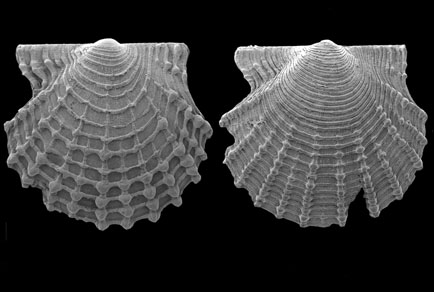Abstract
The Recent Pectinoidea of the New Zealand region are reviewed. Eight new species are described from the New Zealand Exclusive Economic Zone: Parvamussium cancellorum, Cyclochlamys austrina, Cc. delli, Cc. irregularis, Cc. munida, Cc. pileolus, Cyclopecten fluctuosus, and Catillopecten tasmani. Nine species are new records for New Zealand: Parvamussium retiolum Dijkstra, 1995, Pa. vesiculatum Dijkstra, 1995, Sinepecten segonzaci Schein, 2006, Ciclopecten fluctuatus (Bavay, 1905), Pseudamussium challengeri (E.A. Smith, 1891), Spondylus occidens G.B. Sowerby III, 1903, S. proneri Lamprell & Healy, 2001, S. sparsispinosus Dall, Bartsch & Rehder, 1938, and S. jamarci Okutani, 1983. Cyclochlamys bacata and Cc. wanganellica are described from Wanganella Bank, West Norfolk Ridge, and Cyclopecten textus from the Lord Howe Rise. We provide new distribution records for Catillopecten murrayi (E.A. Smith, 1885), Spondylus asperrimus G.B. Sowerby II, 1847 and S. proneri in the south-west Pacific. Cyclopecten aupouria Powell, 1937 and Cp. mestayerae Dell, 1956 are newly referred to genus Cyclochlamys Finlay, 1926; Pecten challengeri E.A. Smith, 1891 is referred to Pseudamussium Mörch, 1853. Bathypecten Schein-Fatton, 1985 is newly synonymised with Catillopecten Iredale, 1939; and Chlamys consociata E.A. Smith, 1915 is newly synonymised with Talochlamys dichroa (Suter, 1909). Brooding is recorded for the first time in Cyclochlamys, and is also the first record in Propeamussiidae. Pronounced sculptural change in response to settlement of sponge on the shell is recorded in Talochlamys dichroa and Zygochlamys delicatula.

